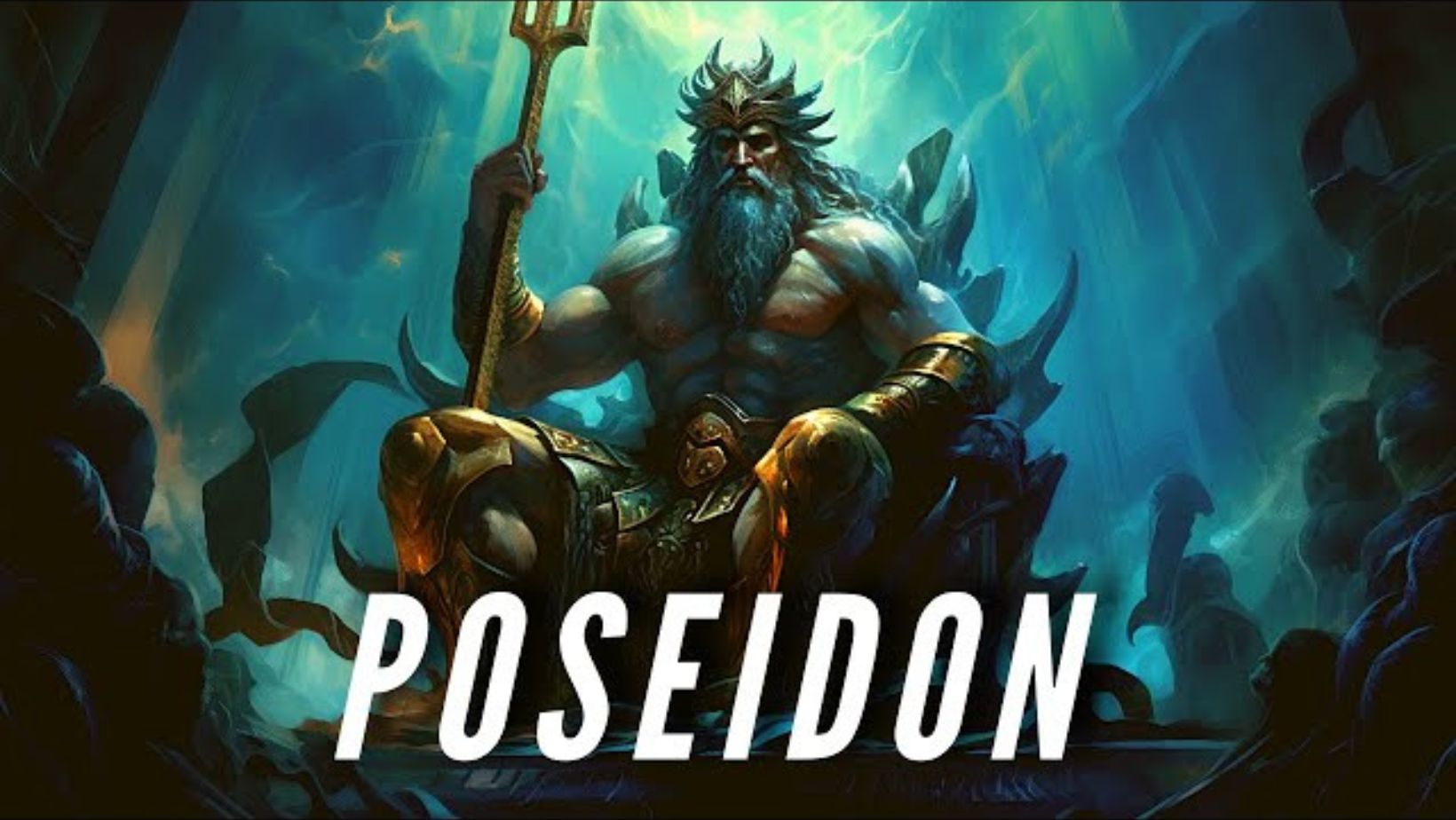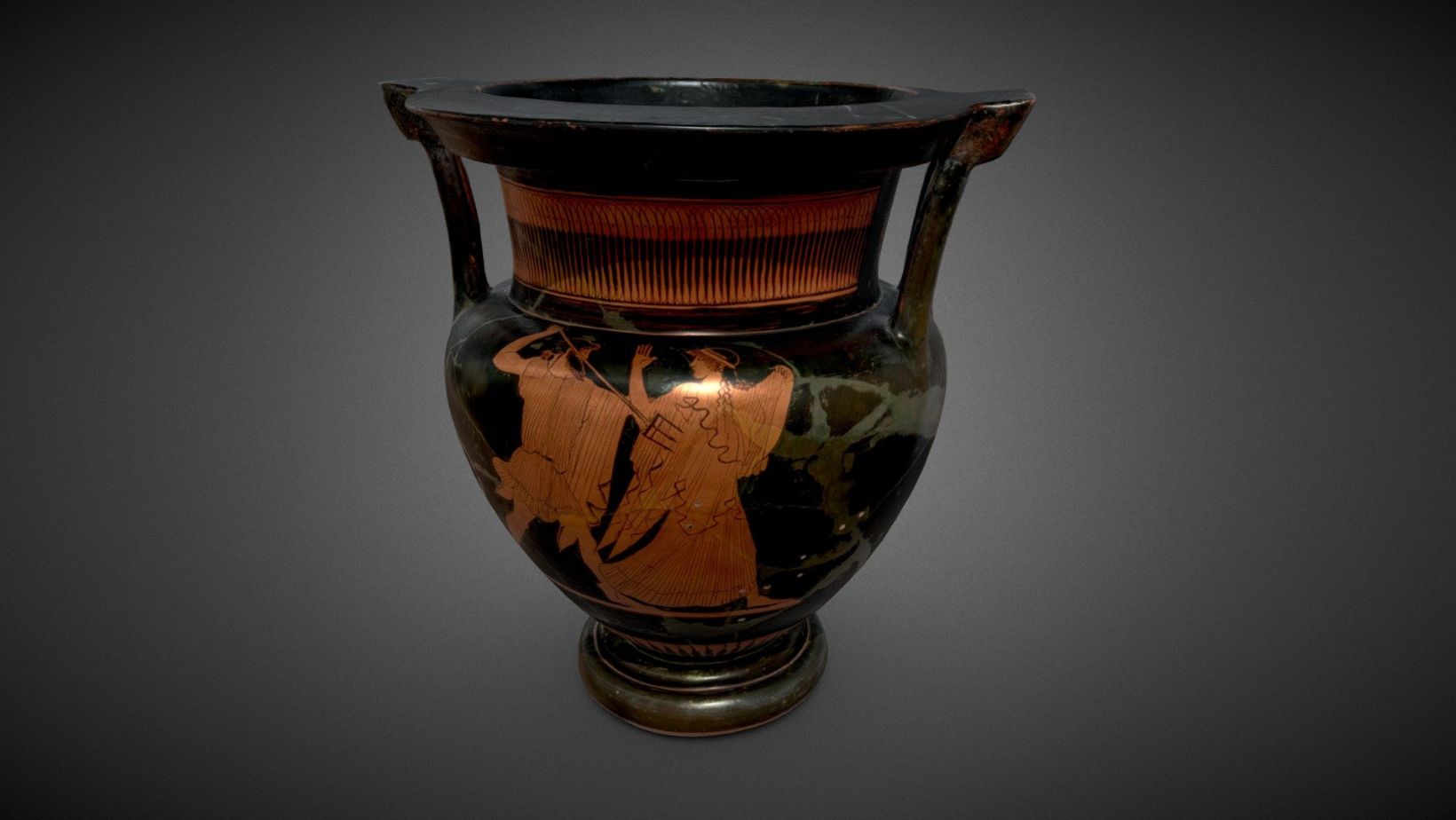Brace yourself for a journey through the captivating world of ancient Greek art, where Poseidon, the formidable god of the sea, left an indelible mark. As one of the most revered deities in the Greek pantheon, Poseidon’s Influence on Greek Art can be seen in countless masterpieces that have stood the test of time.
From towering sculptures to intricately painted pottery, the presence of this mighty god is impossible to ignore. So, let’s embark on an adventure to uncover the secrets of Poseidon’s influence on Greek art and how his legacy continues to inspire and captivate us to this day.
Table of Contents:
- Poseidon’s Role in Greek Mythology and Art
- Depictions of Poseidon in Ancient Greek Sculpture
- Poseidon in Ancient Greek Pottery and Painting
- Poseidon’s Influence on Architecture and Sacred Spaces
- The Symbolism and Attributes of Poseidon in Greek Art
- Conclusion
Poseidon’s Role in Greek Mythology and Art: Poseidon’s Influence on Greek Art

Poseidon, the mighty Greek god of the seas, played a central role in ancient Greek mythology and art. As one of the twelve Olympian gods, Poseidon wielded immense power and influence over the oceans, earthquakes, and horses.
The ancient Greeks believed that Poseidon controlled the waves, currents, and all marine life. Seafarers and coastal communities worshipped Poseidon, seeking his favor for safe passage and bountiful catches.
Poseidon’s Dominion Over the Seas: Poseidon’s Influence on Greek Art
As the god of the sea, Poseidon reigned supreme over the vast waters surrounding the Greek world. He had the power to create storms, calm the waves, and even cause earthquakes with his mighty trident.
In Greek mythology, Poseidon was often depicted riding his chariot across the ocean, pulled by powerful sea creatures like hippocampi (half-horse, half-fish). His domain extended to all bodies of water, from the Mediterranean Sea to rivers and springs.
Poseidon’s Relationships and Offspring
Poseidon had numerous romantic relationships with both goddesses and mortal women. His wife was Amphitrite, a sea nymph, with whom he had several children, including Triton, a merman and herald of the sea.
Poseidon also fathered many other notable figures in Greek mythology.
Other famous offspring of Poseidon include Pegasus, the winged horse, and Chrysaor, a giant born from the severed head of Medusa. These mythological figures often appear alongside Poseidon in ancient Greek art.
Poseidon’s Conflicts and Rivalries
One of his most famous conflicts was with Athena, the goddess of wisdom, over the patronage of Athens.
According to legend, Poseidon struck the ground with his trident and created a saltwater spring, while Athena offered an olive tree. The Athenians chose Athena’s gift, making her their patron deity.
Poseidon also had a long-standing feud with Odysseus, the hero of Homer’s Odyssey.
They showcase Poseidon’s complex nature as both a powerful deity and a figure subject to human-like emotions and conflicts.
Depictions of Poseidon in Ancient Greek Sculpture: Poseidon’s Influence on Greek Art
Sculptures of Poseidon were a common sight in ancient Greece, adorning temples, public spaces, and private homes. These works of art showcased the god’s power, majesty, and role in Greek religion.
Poseidon in Archaic Sculpture
During the Archaic period (c. 800-480 BCE), sculptures of Poseidon were often depicted in a rigid, frontal pose with stylized features. One notable example is the bronze statue of Poseidon found at Cape Artemision, dating back to around 460 BCE.
The statue’s imposing presence and intricate details showcase the skill of Archaic sculptors.
Poseidon in Classical Sculpture: Poseidon’s Influence on Greek Art
The Classical period (c. 480-323 BCE) saw a shift towards more naturalistic and dynamic representations of Poseidon. Sculptors began to capture the god’s strength, energy, and emotions in their works.
A famous example from this era is the Poseidon of Melos, a marble statue dating to around 150 BCE.
The god’s muscular physique, flowing beard, and intense gaze convey his power and authority. The Poseidon of Melos exemplifies the Classical style’s emphasis on realism and the idealization of the human form.
Famous Sculptures of Poseidon
One of the most renowned sculptures of Poseidon was the colossal bronze statue that once stood at the entrance to the harbor of Rhodes. Created by the sculptor Chares of Lindos in the early 3rd century BCE, the Colossus of Rhodes depicted Poseidon and was considered one of the Seven Wonders of the Ancient World.
The Colossus of Rhodes showcased the god’s role as protector of harbors and seafarers.
These statues, along with countless others, demonstrate the enduring fascination with Poseidon and his influence on Greek culture.
Poseidon in Ancient Greek Pottery and Painting: Poseidon’s Influence on Greek Art
In addition to sculpture, Poseidon was a popular subject in ancient Greek pottery and painting. These mediums allowed artists to depict the god in a variety of mythological scenes and narratives.
Poseidon in Black-Figure Pottery

Black-figure pottery, a style prevalent in the early stages of Greek pottery decoration, featured Poseidon in various mythological scenes. This technique involved painting black silhouettes on a red clay background, with details incised into the black glaze.
One famous example is the François Vase, a black-figure krater dating to around 570 BCE. This vase depicts Poseidon attending the wedding of Peleus and Thetis alongside other deities. The intricate details and storytelling on the François Vase showcase the skill of ancient Greek potters and painters.
Poseidon in Red-Figure Pottery: Poseidon’s Influence on Greek Art
The red-figure technique, which emerged in the late 6th century BCE, allowed for more detailed and expressive representations of Poseidon.
A notable example is the Euphronios Krater, a red-figure calyx krater dating to around 515 BCE. This vase features Poseidon engaged in battle with the giant Polybotes during the Gigantomachy, a mythological war between the gods and giants.
The dynamic composition and expressive figures on the Euphronios Krater demonstrate the red-figure technique’s ability to convey action and emotion, bringing Poseidon’s mythological exploits to life.
Poseidon in Wall Paintings and Frescoes
Although few examples of ancient Greek wall paintings and frescoes have survived, those that have endured provide valuable insights into the depiction of Poseidon in this medium.
One such example is the wall painting from the Tomb of the Diver in Paestum, Italy, dating to around 480 BCE. This fresco features a symposium scene with a figure believed to represent Poseidon reclining on a couch, identifiable by his trident and association with marine life.
These examples of Poseidon in pottery and painting demonstrate the god’s enduring presence in ancient Greek art across various mediums. They provide a glimpse into how artists interpreted and represented Poseidon’s myths, attributes, and influence on Greek culture.
Poseidon’s Influence on Architecture and Sacred Spaces: Poseidon’s Influence on Greek Art
Poseidon’s influence extended beyond mythology and art, shaping the architecture and sacred spaces of ancient Greece. Temples, sanctuaries, and other structures were dedicated to the god, reflecting his importance in Greek religion and society.
Temples Dedicated to Poseidon
These sacred spaces served as centers of worship, offering, and celebration, attracting devotees from far and wide.
One of the most famous examples is the Temple of Poseidon at Cape Sounion, located on the southernmost tip of Attica. Built in the 5th century BCE, this Doric temple commands a stunning view of the Aegean Sea, a fitting tribute to the god of the oceans.
The Temple of Poseidon at Isthmia, situated near Corinth, was another significant sanctuary.
Poseidon’s Role in the Isthmian Games: Poseidon’s Influence on Greek Art
The Isthmian Games were second only to the Olympic Games in terms of importance and prestige. Held every two years, these festivals showcased the deep connection between Poseidon, athletic prowess, and Greek cultural identity.
Athletes from across the Greek world gathered at Isthmia to compete in events such as foot races, wrestling, boxing, and chariot racing. The games also featured musical and poetic competitions, attracting artists and performers eager to display their talents in honor of Poseidon.
The games provided a platform for diplomacy, trade, and cultural exchange, strengthening the bonds that held the Greek world together.
Poseidon’s Influence on Harbour and Coastal Structures
Given Poseidon’s role as the god of the sea, his influence extended to the construction and protection of harbors and coastal structures. Ancient Greeks often invoked Poseidon’s favor when building breakwaters, jetties, and lighthouses to ensure the safety and prosperity of their maritime activities.
This magnificent structure, standing at an estimated height of 100-120 meters, guided ships safely into the harbor of Alexandria for centuries.
Other coastal cities, such as Corinth and Piraeus, also erected monuments and altars to Poseidon near their harbors.
Poseidon’s influence on architecture and sacred spaces demonstrates the deep intertwining of religion, culture, and daily life in ancient Greece.
The Symbolism and Attributes of Poseidon in Greek Art: Poseidon’s Influence on Greek Art
In ancient Greek art, Poseidon was often depicted with specific attributes and symbols that identified him as the god of the sea. These visual cues helped to convey his power, domain, and mythological significance.
Poseidon’s Trident and its Significance
The most recognizable attribute of Poseidon in Greek art is his trident, a three-pronged spear that symbolized his control over the oceans.
The trident’s association with Poseidon was so strong that it became an emblem of his cult, adorning temples, altars, and other sacred objects.
The trident also played a role in several mythological stories involving Poseidon. In the contest for the patronage of Athens, Poseidon struck the ground with his trident, creating a saltwater spring. This act, though ultimately unsuccessful in winning the city’s favor, demonstrated the power and significance of Poseidon’s chosen weapon.
Horses and Seahorses as Symbols of Poseidon: Poseidon’s Influence on Greek Art
In addition to his trident, Poseidon was closely associated with horses and seahorses in Greek art. As the god who created the first horse, Poseidon was often depicted riding a chariot pulled by powerful equine creatures.
These creatures, with the upper body of a horse and the tail of a fish, symbolized Poseidon’s dominion over both the land and the sea.
In Greek art, horses and seahorses frequently appear alongside Poseidon, serving as visual shorthand for his power and domain.
The Olive Tree and Saltwater Spring Contest
The famous contest between Poseidon and Athena for the patronage of Athens was a popular subject in ancient Greek art. According to the myth, Poseidon struck the ground with his trident, creating a saltwater spring, while Athena planted an olive tree.
The Athenians ultimately chose Athena’s gift, as the olive tree provided wood, oil, and food, while the saltwater spring was of limited practical use. This event was often depicted in sculptures, pottery, and other art forms, showcasing the rivalry between the two deities.
The symbolism of these two elements – the trident and the olive tree – encapsulates the divine attributes and spheres of influence of each deity.
It also demonstrates the importance of symbols and attributes in identifying and distinguishing the various deities in the Greek pantheon.
Key Takeaway: Poseidon’s Influence on Greek Art
Poseidon, the Greek god of the sea, played a central role in mythology and art. His powerful trident controlled waves and earthquakes. Depicted riding chariots pulled by hippocampi or engaging in rivalries with other gods like Athena, Poseidon’s image appears prominently in sculptures, pottery, and architecture across ancient Greece.
Conclusion: Poseidon’s Influence on Greek Art
Poseidon’s influence on Greek art is a testament to the enduring power of mythology and the creative spirit of the ancient Greeks. Through countless sculptures, pottery, and other works of art, we’ve seen how this mighty god of the sea left an indelible mark on the artistic landscape of the time.
From the awe-inspiring depictions of Poseidon in his various forms to the intricate symbolism woven into each piece, the legacy of this formidable deity lives on. So the next time you find yourself marveling at a work of ancient Greek art, take a moment to appreciate the profound impact that Poseidon had on this remarkable period in human history.
